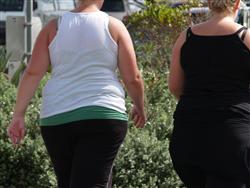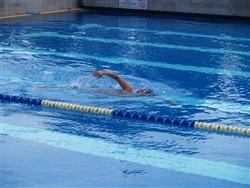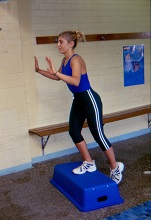
Learn Aerobic Fitness online
- Want an in depth knowledge of Cardio Respiratory Fitness?
- Develop a deeper knowledge for self improvement or as an Aerobic Fitness Instructor.
This course will provide you with knowledge and skills needed to be able to conduct exercise classes in a safe and enjoyable manner which promotes health and fitness to the community.
Aerobics activity is a high-energy work out, often set to fast paced music; or endurance activities such as long distance rowing. It can be fun and energetic way to exercise in a group setting which is instructor lead.
Being an aerobics instructor takes physical energy and the ability to communicate with others supporting them throughout the class, ensuring they are safe and taking part in exercises which are effective and beneficial!
CONTENT
There are six lessons in this module as follows:
1. Organising a Class
-
Anaerobic Energy Supply
-
Phosphate Energy
-
Lactic Acid Energy
-
Energy Requirements for Different Activities; Prolonged by not intense activity, Prolonged Intense Activity, Prolonged Mild to Medium Activity. Short Bursts of Intense Activity
-
Breathing
-
Practical Application of Breathing
-
Training Response; Tolerance Capacity, Fatigue, Recovery, Deterioration
-
Basis for Exercise Programming
-
Movements in Aerobics
-
Methods of Teaching Aerobics; Add on, Link, Linear Progression
-
Music; Beat, New Music, Correct Count, Safety and Challenges, Variety, Obtaining Music
-
Sound System
-

Warm Up
2. Safety and Efficiency
-
Safety Overview
-
Aerobic Class Safety
-
Incorrect Exercises
-
Safety in Other aerobic Activities
-
First Aid Considerations
-
First Aid Materials and Equipment
-
Oxygen Equipment
-
Identifying Hazards
-
Legal Liability
-
Negligence
-
Failure to Take Reasonable Care
-
Providing Protection
-
You as a Fitness Leader
-
Basic Safety Audit
-
Pre Screening Clients
-
Medical Clearance
-
When Liability becomes a Problem
-
Contributory Negligence
-
Insurance
 3. Managing the Workload
3. Managing the Workload
-
Heart Rate
-
Beats per Minute
-
Fitness and Heart Rate
-
Fitness Tests and assessments
-
What to Test –overview
-
Measuring Weight
-
Blood Pressure
-
Weight and percentage fat
-
Height Weight Ratio
-
What affects measurements, significance, variables, methods of measuring different factors
-
Body Mass Index
-
Hydrostatic Underwater Weight
-
Electronic Light Body Composition Analyzers
-
Physical Dimensions
-
Heart Rate; factors, significance, measurement methods, training zone
-
Lung Capacity
-
Cardiovascular Score
-
Cardiovascular Limitations
-
VO2 Max
-
Step Tests
-
Field Evaluation of Cardio-respiratory Endurance
-
Designing Fitness Tests
-
Procedure for Constructing a New Fitness Test Series
-
Before any Test
-
Test Conditions
-
What Combination of Tests
-
Managing Exercise Programs
-
Training Response
4. Teaching
-
Managing Exercise Programs
-
Devising Sets of Relevant Exercises
-
Types of Classes
-
Classes for Different Types of People; mature adults, athletes, beginners, children of different age groups
-
Intellectually or Physically Disabled Groups
-
Motivation
-
Dealing with Complaints
5. Class Design
-
Fitness and Aerobic Class Design
-
Class Intensity and Duration
-
Pre Class Screening
-
Introductory Part of the Class
-
Intra Class Instruction
-
Writing an Exercise Program (Session Plan)
-
Typical Aerobics Class
-
Aerobic Warm Up
-
Stretching; body stretch, gluteal stretch, hamstring stretch, Groin Stretch, Abductor Stretch, Lower Back Stretch
-
Main Body of Exercise Session
-
Structured Routine
-
Simple Routine
-
Recovery
-
Muscle Conditioning During Class
-
Concluding the Session
-
Cool Down
-
Class Design
-
Exercises for Specific Problems
6. Leadership and Participation
- Leadership Concepts
- Leadership Responsibilities
- Shared Leadership
- Qualities of a Leader
- Leadership Communication
- Common Communication Barriers
- Self Esteem
- Reinforcement
- Body Language
Aims:
- Plan and organise effective cohesive exercises to use with music and for progressive long
- Devise sets of relevant exercises into class programs
- Relate sequences of exercises to music tracks
- Purchase a tape and map out various songs using correct music mapping
- Learn the Add On, Link and Linear Progression methods of teaching aerobics
- Gain a knowledge of music licensing
- Recognise and observe all guidelines for safety and efficiency of movement.
- Design exercise to music classes, using safe exercise practices and movement
- Understand equipment considerations, maintenance and usage.
- Understand the importance of ventilation, temperature, floor surface, hygiene, correct clothing and footwear.
- Determine different class intensity and duration
- Measure the workload during a class, and use training components to design classes that are well graded.
- Compose correct techniques in exercising and teach by example and verbal instruction,
- Understand recommended practises - layering, visual preview, choreography and phrasing.
- Identify the different components of a class.
- Explain how to cater for different levels of fitness and special populations.
- Lead an exercise to music class, using appropriate teaching principles.
- Participate in a variety of exercise to music classes, moving in a controlled and efficient manner.
- Identify common injuries, treatment and prevention, for participants in aerobics classes.
Course Code: BRE203
Number of Assignments: 6
Course Duration: 100 hours

How Can You Know if Your Aerobic Fitness is Good or Bad?
There are many different things that can indicate your level of aerobic fitness. These include such things as
- Heart Rate
- Blood Pressure
- Lung Capacity
- Weight
- Percentage of Body Fat
What is a Cardiovascular Score?
This is a measure of how the heart rate changes in relation to a measurable amount of physical activity. Maximal oxygen uptake can be referred to as VO2 max.
1) Factors
Depends on how you feel on the day. Factors such as caffeine intake, medication, exercise, stress levels, time of day, and health at the time of measurement can all affect heart rate. VO2 max is affected by:
- Fitness - regular exercise can improve V02 max by up to 20%.
- Blood - haemoglobin content in the blood can vary between people and, in particular, between genders (females generally have a lower count than males, resulting in VO2 max for females of up to 30% less than males).
- Genetic Characteristics
- Type of Test - for example, someone who does not exercise regularly will often give better results on a treadmill than on a cycle ergometer.
2) Significance
- Shows how exercise affects heart rate, and how quickly you recover.
- Shows the total amount of oxygen that can be utilised by the body.
3) Variables
- Pulmonary Function - normal or abnormal.
- Muscle Twitch Fibres - depending on one's percentage of muscles, twitch fibres can limit their maximal oxygen uptake. An individual with a large proportion of slow twitch fibres (red/oxidative) will be more inclined to be an endurance athlete rather than a sprinter.
Cardiovascular limitations:
- Age - VO2 max decreases by about 10% per decade with aging, beginning in the late teens for women and mid 20's for men. This can also be associated with a decrease in cardio-respiratory endurance activity.
- Heart Conditions - many people may have to be aware of their potential to train if they have heart problems.
- Oxygen Use - because muscles can receive more oxygen this doesn't mean they can use it. It depends on the myoglobin content and how well it extracts oxygen from the blood.
- Diffusion Capacity - blood may become saturated with oxygen when it has only passed through part of the lungs, so even though it is exposed to more oxygen before leaving the lungs, it doesn't have the ability to absorb it.
- Nervous System - the sympathetic division of the autonomic nervous system stimulates vasodilation and vasoconstriction. Vasodilation allows more blood to enter the active skeletal muscles. Vasoconstriction occurs in most other tissues and assists in diverting blood to the active muscles. These nervous system functions promote better oxygen delivery around the body.
- Oxidative Enzymes - mitochondria and its efficiency increases with endurance training.